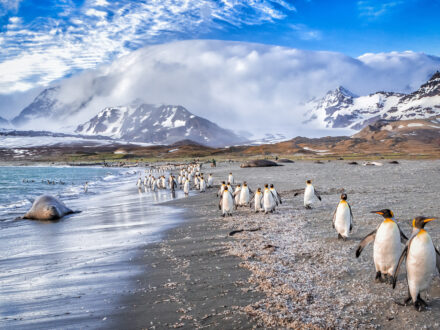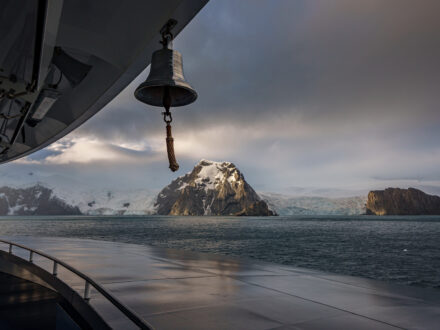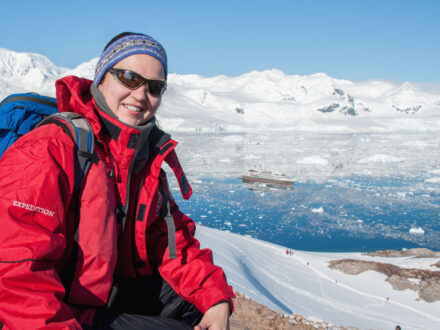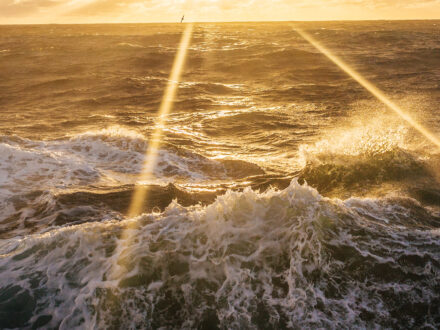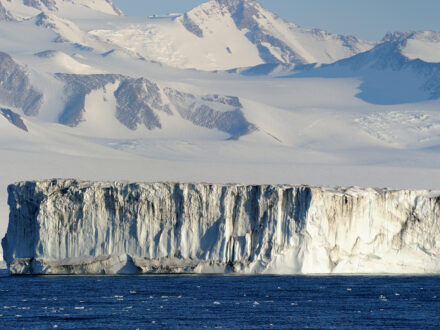Do You Need A Passport, Visa Or Permit To Go To Antarctica?
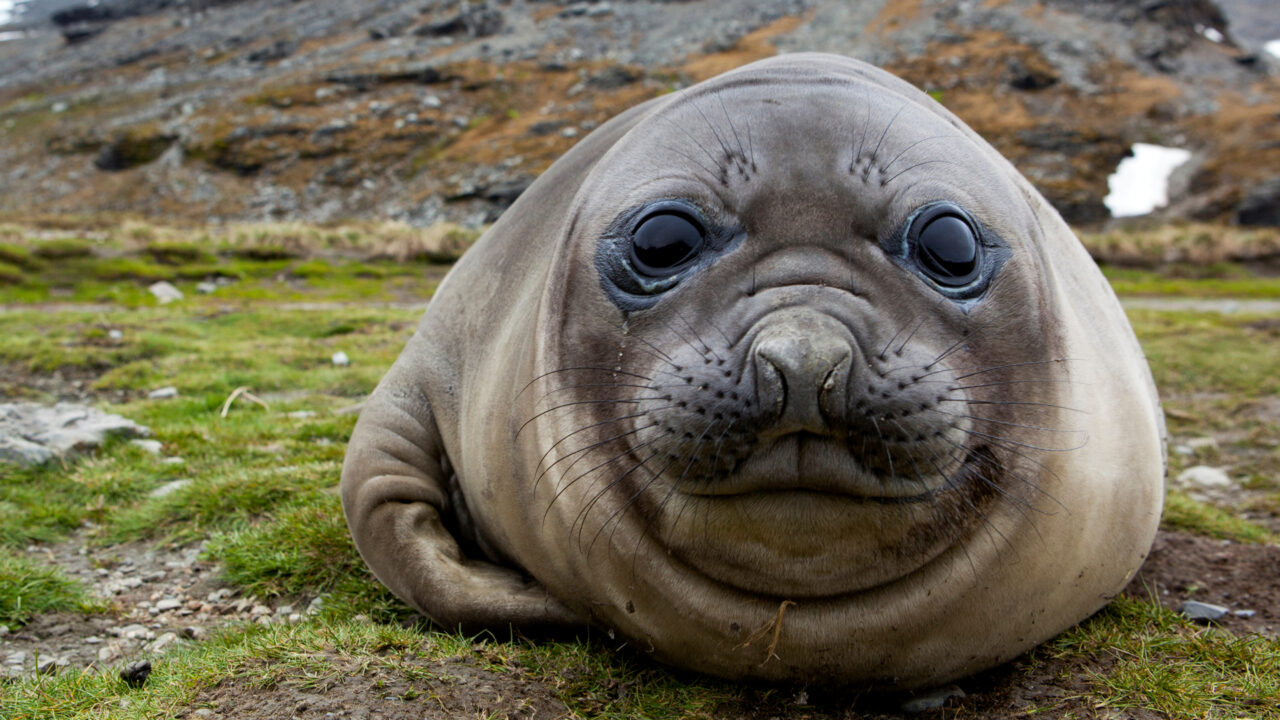
- Do You Need Permission to Go to Antarctica?
- Restricted or Closed Areas in Antarctica
- Do You Need a Passport to Go to Antarctica?
- Antarctica Visa Requirements
- Vaccinations & Travel Insurance
- South Georgia, South Sandwich Islands, and Falkland Islands Visa Requirements & Permits
- Permits for Drone Use & Photography in Antarctica
- The Antarctica World Passport
- What Do You Need to Go to Antarctica?
Traveling to the bottom of the world may seem complicated, but it’s actually pretty straightforward, despite Antarctica’s extreme remoteness. The chance to see the last great terrestrial wilderness on Earth—not just pristine and wild, but also breathtakingly beautiful—has made the White Continent among the most coveted of travel destinations, and more and more are making the trip (way) down.
We’ve covered the basic, big-picture logistics of visiting Antarctica in another article: from the main types of tours to the mandates and recommendations for visiting this singular realm conscientiously and ethically. In this guide, we’ll look at the subject of Antarctica entry requirements in more detail, running through some of the documents you’ll need—or won’t need—on your bucket-list journey to the White Continent.
Do You Need Permission to Go to Antarctica?
Citizens of countries that are party to the Antarctic Treaty—which now includes more than 50—need a permit to visit Antarctica: a requirement established in 1998 with the Treaty’s Protocol on Environmental Protection adoption. But most visitors don’t have to really worry about how to get permission to go to Antarctica, because tour operators typically take care of the requisite permits. Folks who are taking the uncommon route of an independent trip to Antarctica, though, need to make sure they obtain permission.
Those residing in nations that aren’t party to the Antarctic Treaty might technically not need a permit to visit Antarctica, but there’s a catch: If they’re traveling via a tour operator based out of a country that is party to the Treaty, they will need a permit regardless of their citizenship. (Again, though, the tour company is almost assuredly taking care of that permission.)
Why do you need permission to go to Antarctica? It’s part of the Antarctic Treaty’s mission of safeguarding the White Continent’s environment: Permits help control tourism in this one-of-a-kind—and fragile—wilderness.
Seal looking at the ship approaching
Restricted or Closed Areas in Antarctica
It should be noted that the permits obtained by tour operators don’t provide you with unrestricted access. Travel on the Antarctic continent is highly regulated and restricted: a good thing not only for protecting the White Continent’s ecosystem, but also visitors themselves. Certain areas are closed to protect critical wildlife habitat such as seabird or pinniped rookeries, though these zones may be open to scientists with the requisite research permits and credentials. The Antarctic Treaty has established specific site guidelines for popular tourism spots in the Antarctic zone, which lay out how and where landfalling visitors can explore.
Do You Need a Passport to Go to Antarctica?
You’ll need a valid passport to visit Antarctica, as one is required by the countries through which you’ll pass to reach the White Continent. (Reading this is a good excuse to check your passport and make sure it’s not expired, or soon to be!)
Keep in mind you won’t find any foreign embassies in Antarctica proper, so if you happen to misplace your passport during the trip, you’ll need to contact your embassy in whatever country you’re headed for after the White Continent.
Antarctica Visa Requirements
Do you need a visa to go to Antarctica? No, because no nation claims ownership over the White Continent. A visa, however, may be required for travel to the country from which you’re embarking to the Antarctic.
Emphasis on “may,” though: For example, American, British, Australian, and New Zealand passport holders don’t need a visa to travel out of Ushuaia, Argentina or Punta Arenas, Chile—the two top jumping-off points for Antarctica—if they’re not staying longer than 90 days. Those who want to tack on an extended exploration of South America as part of their Antarctic experience—a fabulous idea, if you have the time to spare—will likely need to get visas, though.
Not a daily occurance
Vaccinations & Travel Insurance
There are no vaccination requirements per se for visiting Antarctica. That said, you may need proof of vaccination for certain entry countries or tour operators, and it’s a good idea to consult with your doctor for vaccine recommendations related to your travels before and after the White Continent. When it comes to COVID restrictions in Antarctica, here again you’ll be dealing with the specific requirements of the countries you’re traveling to as part of your trip and of the tour operator you’re signing on with.
Tour operators to Antarctica require you to purchase travel insurance, which helps cover such contingencies as emergency medical evacuations.
South Georgia, South Sandwich Islands, and Falkland Islands Visa Requirements & Permits
Those participating in longer cruises may have similar questions about the additional destinations visited en route to or from Antarctica proper. You’ll need a passport to travel to the Falklands and the Antarctic islands of South Georgia and the South Sandwich archipelago.
Citizens of a number of countries, including the U.S., Great Britain, Canada, Australia, Japan, and E.U. nations, don’t need a visa to visit the Falklands, nor do passengers of whatever nationality who are visiting via cruise ship. (Visitors who want to spend extended time in the Falklands are another story.) Land-based visitors to the Falklands need to possess a return ticket and proof of pre-booked lodgings and sufficient travel funds.
No visa is needed to visit South Georgia or the South Sandwich Islands, also commonly visited on Antarctic cruises.
Permits for Drone Use & Photography in Antarctica
Whilst we’re on the subject of permission required for Antarctica tourism purposes, visitors often ask about photography and drone use regulations. Drones and Unmanned Aerial Vehicles (UAVs) have downright exploded in popularity among both recreational and professional users, especially photographers and videographers. The International Association of Antarctica Tour Operators (IAATO) currently doesn’t allow the recreational use of drones or UAVs in Antarctica, though the subject is regularly reviewed and many suspect this ban will, at some point, be lifted or loosened in some form.
There are many potential problems with drone use in Antarctica: These devices may unintentionally disturb wildlife, and should they experience a malfunction—and they quite likely might, given the effects of the extreme Antarctic weather on their machinery—they could easily introduce manmade trash into the largely pristine and unpolluted environment.
Those who wish to employ drones/UAVs for research, filmmaking, or other specific purposes may, however, apply for an Antarctica drone permit.
Commercial photographers and filmmakers may need permits to shoot certain places in Antarctica, but recreational photography is permitted.
Penguins hunting
The Antarctica World Passport
We’ve spelled out the Antarctica passport requirements, which in fact are the passport requirements of the countries through which you’re traveling and the tour companies you’re using in order to reach the White Continent. (By the way, you can often obtain a souvenir Antarctica passport stamp from certain research stations, though it’s a good idea to use such stamps on, say, the pages of your travel journal rather than in your actual passport.)
We’d be remiss not mentioning a keepsake sort of Antarctic passport that you can acquire whether or not you physically travel to these polar wilds: the Antarctica World Passport. This is an unofficial digital document celebrating the unique status of Antarctica that was conceived by artists Lucy and Jorge Orta (also known for raising a supranational, multicolored Antarctic Flag on the White Continent in 2007).
It’s “a universal passport for a continent without borders,” as the project’s website describes, one partly meant to also raise awareness about climate change. As of this writing, nearly 43,000 people around the globe have acquired one of these Antarctica passports—maybe you’ll be next!
What Do You Need to Go to Antarctica?
Compared to some travel destinations, the documentation you’ll be required to have along with you on a trip to Antarctica is on the minimal side. The most important things you need for a getaway to the White Continent? All things considered, probably a sense of adventure, the capacity to be awed by the grandeur of the primal Earth, and a commitment to traveling lightly and respecting the physical and biotic elements of the utterly remarkable Antarctic environment. And, hopefully, that sounds like you!
Disclaimer
Our travel guides are for informational purposes only. While we aim to provide accurate and up-to-date information, Antarctica Cruises makes no representations as to the accuracy or completeness of any information in our guides or found by following any link on this site.
Antarctica Cruises cannot and will not accept responsibility for any omissions or inaccuracies, or for any consequences arising therefrom, including any losses, injuries, or damages resulting from the display or use of this information.










































